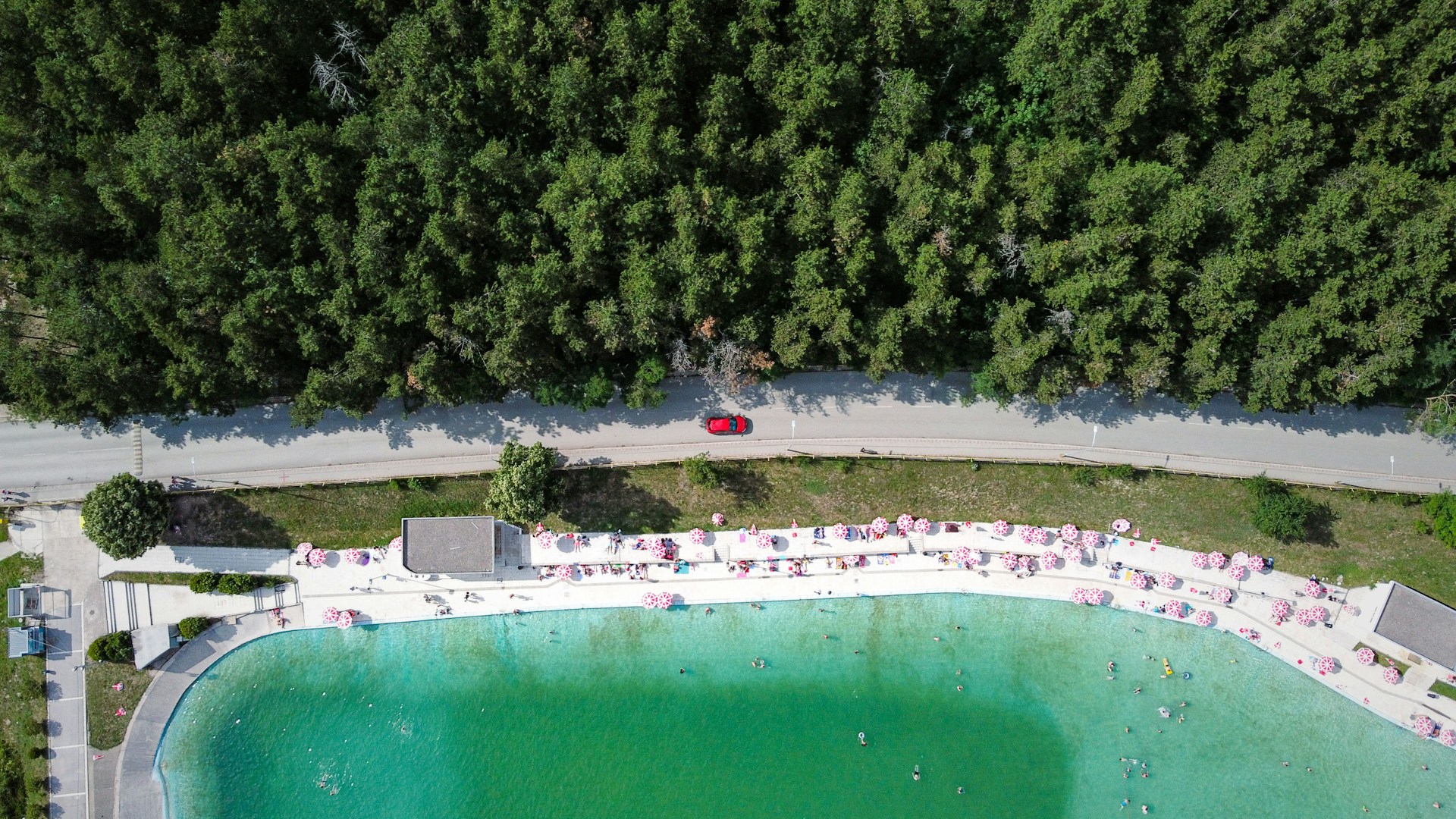Culture & Travel
12 August 2024Pristina, the capital and largest city of Kosovo, is a destination where history, culture, and modern life intertwine. The ability to travel there without a visa from Türkiye makes it an appealing option for those looking to explore this city.
So, are you curious about where to go and what to do when you visit this beautiful city?
How to Get to Pristina
Direct flights from Türkiye to Pristina are available, with the journey taking about 1.5 hours. Since no visa is required, you can easily enter with just your passport. Pristina International Airport is only 15 minutes from the city center.

Places to Visit in Pristina
Kosovo’s dynamic capital, Pristina, is filled with historical riches and modern attractions, making it a city that’s always alive. The combination of historical buildings and contemporary art makes Pristina a fascinating place for travelers interested in history, culture, and art.
1. Kosovo Museum (Muzeu i Kosovës)
The Kosovo Museum is one of Pristina’s most important cultural institutions. Established in 1949, it showcases Kosovo’s archaeological and ethnographic treasures. The museum is a key stop for those who want to observe the changes the city and country have undergone from prehistoric times to the Ottoman Empire and get to know the region's cultural heritage up close.
2. Great Hamam (Çarshia e Madhe Hamami)
You’ll encounter many structures in the city that bear the traces of Ottoman architecture, and the Great Hamam is one of the most significant. Although this 15th-century Ottoman bathhouse is not currently open to the public, its exterior details continue to attract history enthusiasts. Located in Pristina’s old town, visiting the Great Hamam offers a chance to explore the surrounding historic atmosphere.
3. Fatih Sultan Mehmet Mosque
One of Pristina’s oldest and most important religious buildings, this mosque was built by Sultan Mehmed the Conqueror in 1460 as a symbol of the Ottoman Empire’s influence in the Balkans. With its elegant minaret, interior decorations, and large courtyard, the Fatih Mosque reflects Ottoman aesthetics and remains an active place of worship today.

4. Ethnological Museum (Emin Gjiku Complex)
The Ethnological Museum in Pristina, also known as the Emin Gjiku Complex, is a vital museum that displays Kosovo’s traditional lifestyle and cultural heritage. The building, originally an Ottoman-era mansion, allows visitors to see various ethnographic artifacts such as traditional Kosovan home life, handicrafts, regional clothing, and agricultural tools, providing a glimpse into daily life from that era.
5. Newborn Monument
The Newborn Monument, created after Kosovo declared independence from Serbia in 2008, has become one of Pristina’s modern symbols. Painted with different themes each year on Kosovo's Independence Day, February 17, the changing colors and designs symbolize Pristina's ever-renewing energy and dynamism.
6. Mother Teresa Square (Sheshi Nënë Tereza)
It wouldn’t be wrong to call Mother Teresa Square the heart of Pristina’s city center. This square is a central gathering place for locals and is surrounded by shopping centers, cafes, restaurants, and government buildings. It also hosts many events and celebrations.
7. National Library (Biblioteka Kombëtare e Kosovës)
Now let’s introduce one of Pristina’s most unusual buildings. With its modern architecture, the National Library of Kosovo draws attention for its exterior, which features 99 domes enclosed in a web of steel. This design, which reflects Kosovo’s cultural heritage through a modern lens, is a popular attraction for visitors. Beyond its unique architecture, the library offers historical documents, books, and manuscripts, providing insights into the country’s literary and cultural history.

8. Germia Park
After discussing history, let’s talk about a natural beauty close to the city center. Germia Park, with its vast forested areas, walking paths, biking trails, and picnic spots, offers a chance to spend a day in nature. A large swimming pool, open in the summer, makes the park a popular relaxation spot for both locals and tourists. It’s the perfect escape from Pristina’s bustling city center to enjoy the great outdoors.

9. Clock Tower
Another Ottoman-era structure, the Clock Tower, is one of the historical landmarks in Pristina’s old town. This 26-meter-high tower, one of Pristina’s symbols, offers visitors a chance to experience the city’s historic atmosphere.

Eating and Drinking in Pristina
Pristina offers many restaurants where you can find both traditional Kosovan cuisine and international flavors. Some local favorites include Flia, a dish made by spreading clotted cream between thin layers of dough and cooking it over a wood fire; Burek, a type of breakfast pastry; and Tavë Kosi, a yogurt and egg-based meat dish.
Accommodation in Pristina
Pristina offers accommodation options to suit every budget, with a range of boutique hotels, guesthouses, and international chain hotels available.
Things to Know in Pristina
• Currency: The Euro (€) is used in Kosovo.
• Language: The official languages are Albanian and Serbian, but many young people speak English.
• Transportation: Public transportation within the city is mainly by bus and taxi. The city’s public transport network is well-developed, but since it’s a small city, many places can be explored on foot.



